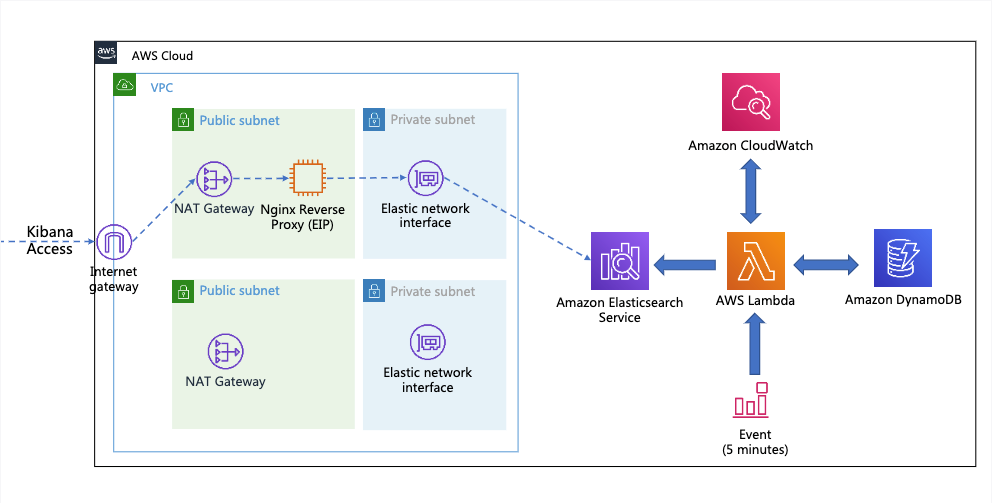AWS Big Data Blog
Category: Analytics
Work with semistructured data using Amazon Redshift SUPER
With the new SUPER data type and the PartiQL language, Amazon Redshift expands data warehouse capabilities to natively ingest, store, transform, and analyze semi-structured data. Semi-structured data (such as weblogs and sensor data) fall under the category of data that doesn’t conform to a rigid schema expected in relational databases. It often contain complex values […]
Increase Amazon Elasticsearch Service performance by upgrading to Graviton2
September 8, 2021: Amazon Elasticsearch Service has been renamed to Amazon OpenSearch Service. See details. Amazon OpenSearch Service supports multiple instance types based on your use case. In 2021, AWS announced general purpose (M6g), compute optimized (C6g), and memory optimized (R6g, R6gd) instance types for Amazon OpenSearch Service version 7.9 or later powered by AWS […]
Design patterns for an enterprise data lake using AWS Lake Formation cross-account access
In this post, we briefly walk through the most common design patterns adapted by enterprises to build lake house solutions to support their business agility in a multi-tenant model using the AWS Lake Formation cross-account feature to enable a multi-account strategy for line of business (LOB) accounts to produce and consume data from your data […]
Streaming Amazon DynamoDB data into a centralized data lake
February 9, 2024: Amazon Kinesis Data Firehose has been renamed to Amazon Data Firehose. Read the AWS What’s New post to learn more. August 30, 2023: Amazon Kinesis Data Analytics has been renamed to Amazon Managed Service for Apache Flink. Read the announcement in the AWS News Blog and learn more. For organizations moving towards […]
Top 10 Flink SQL queries to try in Amazon Kinesis Data Analytics Studio
August 30, 2023: Amazon Kinesis Data Analytics has been renamed to Amazon Managed Service for Apache Flink. Read the announcement in the AWS News Blog and learn more. Amazon Kinesis Data Analytics Studio makes it easy to analyze streaming data in real time and build stream processing applications using standard SQL, Python, and Scala. With […]
Preprocess logs for anomaly detection in Amazon OpenSearch
September 8, 2021: Amazon Elasticsearch Service has been renamed to Amazon OpenSearch Service. See details. Amazon OpenSearch Service supports real-time anomaly detection, which uses machine learning (ML) to proactively detect anomalies in real-time streaming data. When used to analyze application logs, it can detect anomalies such as unusually high error rates or sudden changes in […]
DOCOMO empowers business units with self-service knowledge access thanks to agile AWS QuickSight business intelligence
NTT DOCOMO is the largest telecom company in Japan. It provides innovative, convenient, and secure mobile services that enable customers to realize smarter lives. More than 73 million customers in Japan connect through its advanced wireless networks, including a nationwide LTE network and one of the world’s most progressive LTE Advanced networks. In addition to […]
Amazon Redshift identity federation with multi-factor authentication
July 2023: This post was reviewed for accuracy. Password-based access control alone is not considered secure enough, and many organizations are adopting multi-factor authentication (MFA) and single sign-on (SSO) as a de facto standard to prevent unauthorized access to systems and data. SSO frees up time and resources for both administrators and end users from […]
Monitor your Amazon ES domains with Amazon Elasticsearch Service Monitor
September 8, 2021: Amazon Elasticsearch Service has been renamed to Amazon OpenSearch Service. See details. Amazon OpenSearch Service is a fully managed service that you can use to deploy, secure, and run Elasticsearch cost-effectively at scale. The service provides support for open-source Elasticsearch APIs, managed Kibana, and integration with Logstash and other AWS services. Amazon […]
Hydrate your data lake with SaaS application data using Amazon AppFlow
Organizations today want to make data-driven decisions. The data could lie in multiple source systems, such as line of business applications, log files, connected devices, social media, and many more. As organizations adopt software as a service (SaaS) applications, data becomes increasingly fragmented and trapped in different “data islands.” To make decision-making easier, organizations are […]






